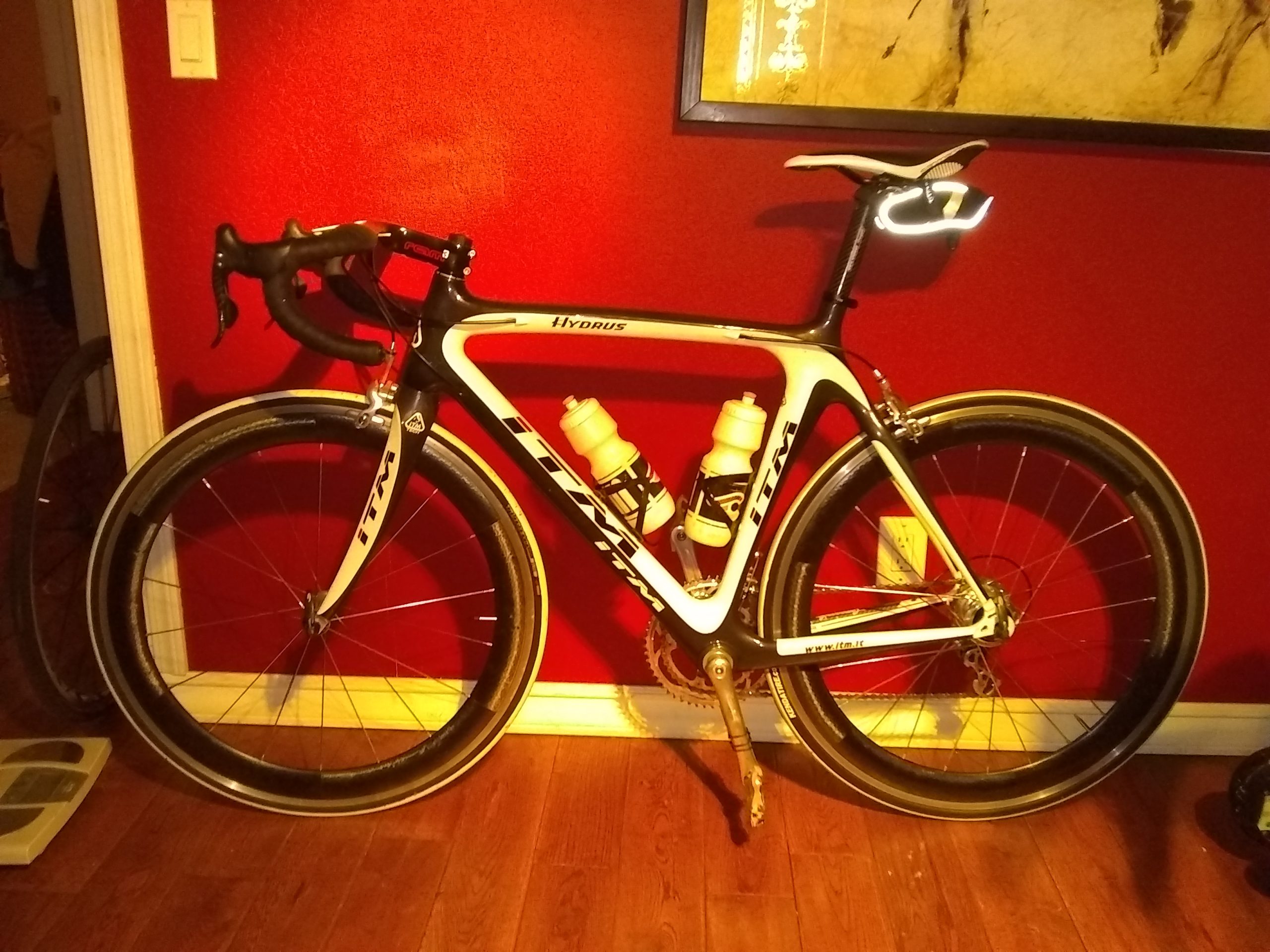Contrary to the opinion of a recent article by Eben Weiss from Outsideonline where he argues that they only make sense for the professional cyclist, carbon bikes have won me over hands down. Why? Ride Quality. If you ride anywhere besides the super smooth surfaces of brand new bicycle paths, you want a carbon bike. His primary argument is that carbon bikes are like eggshells and lack the durability to withstand the normal day to day mishaps of the average cyclist. The one in the photo is over 15 years old and has traversed over 30k miles without mishap. Granted I do own a torque wrench and try to keep two wheels on the ground at all times but still I wouldn’t trade it for anything else.
Steel bikes are nice and classic, they have a much better ride quality than the pogo sticks made of aluminum but they still don’t hold a candle to the road dampening ability of a carbon bike. Throw in carbon bars, a carbon seat post , carbon stem and yes even carbon wheels and you can ride over even the roughest of chip seal roads without your teeth chattering.
If you are a super casual cyclist that only rides a couple times a year then yes even an aluminum frame would likely make more economical sense. I own all three types carbon, steel, and aluminum. The pros and cons of each are listed below.
Aluminum: Doesn’t rust. Will oxidize from the salt in your sweat if you don’t clean it properly after each ride. Ride quality is responsive. Excellent for criterium racing, track racing or if you live in a “marine” environment where rust can be a serious issue. Inexpensive and many options to choose from.
Steel: Can rust if in a marine environment, ie you live on the Coast or your department of transportation uses salt on the roads in the winter. Inexpensive. Good option for a touring bike where durability is the most important quality and you will have a large plush seat to absorb the road jitter. Does ride more plush than aluminum, with a slight sway and flexibility from side to side that both carbon and aluminum lack. Strong enough to attach a rack mount to without damaging the frame. Should survive a minor crash and still be ridable. Think tipping over not getting hit by a car.
Carbon Fiber: Rigid from a flex stand point yet absorbs road vibrations better than steel or aluminum. Can be damaged from accidents. Is tough but brittle if struck with an object. Do not clamp top tube with “old” style jaw bicycle carriers. Do not over torque nuts. They are more high tech and do require proper tools to work on or a quality bike shop to do repairs. Can be relatively inexpensive now although top end models will set you back the price of a decent used car. The biggest selling point on a carbon bicycle is the absorption of road vibrations. With proper care a carbon bike is still the best choice for long one day outings or even the weekend warrior that does more than 50 miles a week.





